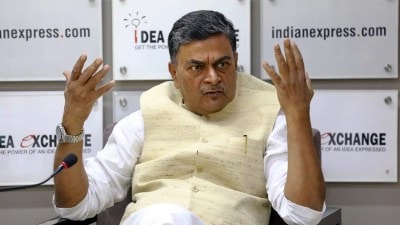Dreams pave the road to the future
The first priority of economists and planners for a village is, invariably, providing for irrigation water and land development. But the ...

The first priority of economists and planners for a village is, invariably, providing for irrigation water and land development. But the villager himself is interested in access to markets, both local and international, presumably with the idea that he can do something for himself with his land and his tubewell.
When the late Raj Krishna was preparing the first minimum needs plan, I was working with him. Initially the idea was to cover foodgrains, drinking water, education and health. But as we studied all the local plans produced with “consultation”, it turned out that rural roads were a high priority and so village roads were included as a minimum need. When the basic minimum services plan was pushed by the then Prime Minister in 1996, the rural roads programme was called “connectivity”. Bihar, Orissa, UP, and the North East still had less than 40 per cent villages “connected”. But in many states this percentage was over 70.
In rural Ahmedabad, all villages are by now connected. But“connectivity” is still, strangely, a priority. The villages of Jagatpura and Chainpura are, as the crow flies, less than 5 km from Gota which is off National Highway No 8. When the minimum need plan was made in the late ’70s, the village road was to connect each village to the closest national, state or district road.
Take Chainpura, which is connected to a district road. The building industry is growing rapidly in Ahmedabad district. Granite polishing is done in Gota only 4 km away, but a lot of persons who work there, have in the monsoons to walk over 9 km by the “connected” road to reach there. Interestingly, the villagers of Chainpura are willing to contribute their mite for connectivity to their work centre. But in spite of the constitutional amendment on panchayati raj, the road they want is still not a part of the district plan.
Ganpatipura is a village close to the taluka town of Dholka. It has a beautiful Ganesha temple. Legend has it that the deity’s foot was hurt and bled and was cured bythe high priest who was also a vaidya. Anyway on Saturdays and during Chaturthi, thousands of people come here. Connectivity for many of the villages around the temple means a long journey, while a direct road is a short while away. As incomes improve a trip to a pilgrim centre is also an occasion when the family can enjoy itself and again people will be willing to contribute for it.
In far away Maharashtra, the Gopalgaon group of five villages is a part of the cane command area of a Cooperative Sugar Factory. This is a drought prone area growing millets, lentils and fodder crops. As the water from irrigation in the area was not enough, diversification took place. Dairying, poultry and the rural development activities came up around the sugar factories. In the nineties it was decided in this part of Nagar taluka, to harvest the remaining rainwater. Eventually a watershed development project was started with German assistance and help from Nabard. The water table improved and there was some shift of land tofruit, vegetable and flower crops. Dr Anita Raj, who worked with an NGO called PIRENS led by Shanker Rao Joshi, tells me that as soon as some diversification took place the first priority of the Village Watershed Committee was a road.
Like in Ahmedabad, the villages here are connected, under the minimum needs plan, but people still want a good road. They want to travel for shorter distances. They collected stone and gave labour and tractor time to conduct experts to the new sites. The idea is for all the villages to be properly connected to each other and then on to the Mumbai-Nashik State Highway. Again, this is not a part of the district plan. It there was such infrastructure, the distance of the villages to the markets for fruits and vegetables would have gone down by 10 km. But what they want most of all is that the distance to Shirdi goes down by 10 km. For this is the land of Shirdi ka Sai Baba and his mandir and his masjid lives in the heart and the soul of every peasant and worker here, whether heis Hindu, Mussalman, or Issai.
They have collected the offers of land from the area for the new road and have come up with a map. If they were a government agency, they would have said that a pre-feasibility plan is there. But at present they only have Gaon Sabha resolutions and “sketches”. And their dreams are not a “plan”.
When the basic minimum services plan was decided in the Ninth Plan, it was decided that priorities would be decided at the state level and the Centre transferred money for this purpose. The states were to give similar freedom to lower levels. The Centre did broadly live up to the obligations it had as decided by a Chief Ministers’ Committee which worked with me, but from all reports, progress is slow. It is by now quite clear that the panchayats have in many areas clearly defined priorities and can probably provide the facilities really needed.
In states like Bihar, Orissa, Madhya Pradesh and Rajasthan, connectivity is still a distant concept and in many regions in these statesless than a third of the villages have roads. But in other areas, people are more aware and have begun to articulate their needs. We need to develop systems to support the villagers’ own vision of where their road should go in the next century.



- 01
- 02
- 03
- 04
- 05




























